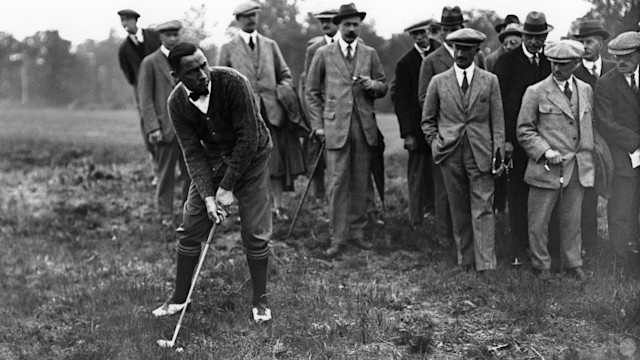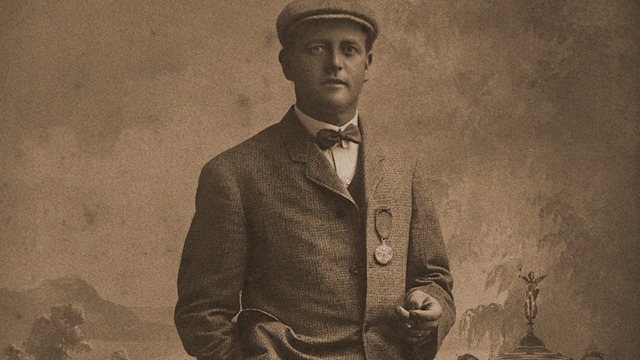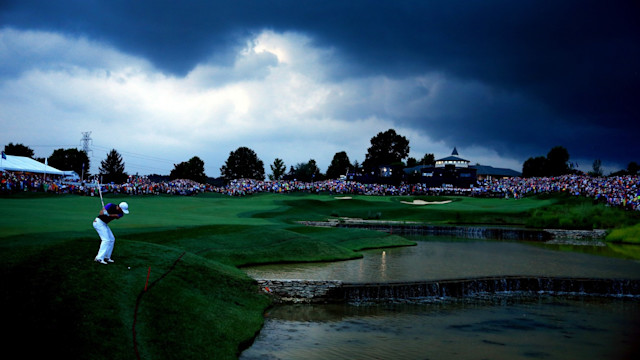Category - Major Events
That One Time the Wanamaker Trophy Went Missing
By David Mackesey
Published on
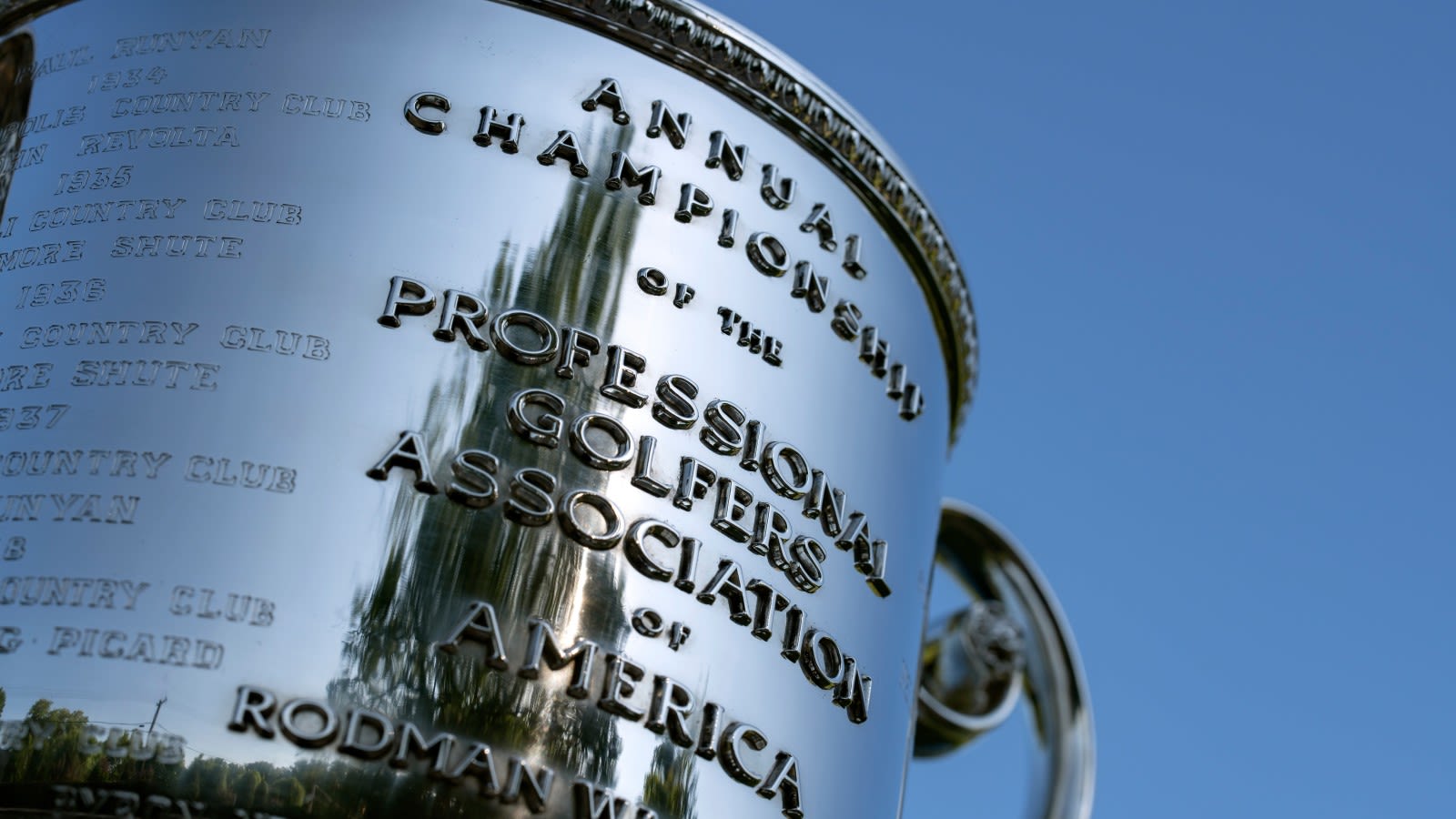
Lewis Rodman Wanamaker, son of American merchant legend John Wanamaker, believed that establishing the country’s first all-professional golf association came with making a statement.
When he donated the namesake trophy for the inaugural PGA Championship in 1916, he couldn’t be blamed that the creation of one of the largest award pieces in sports was a tremendous burden for someone caring for its welfare.
Whether on a long train ride, in a hotel, or on the fireplace mantel of a champion’s home, possession of the trophy was both the winner’s honor and responsibility. Wanamaker certainly never contemplated that the confident, yet cavalier, Walter Hagen might someday endanger his sterling silver trophy.
The dawn of the PGA Championship
The 1920s marked an era when golf professionals rose in public stature and acclaim. Names such as Hagen, Sarazen, and Armour made headlines not only for their talent as winners of major championships, but also for their flair and personal style, both on and off the golf course.
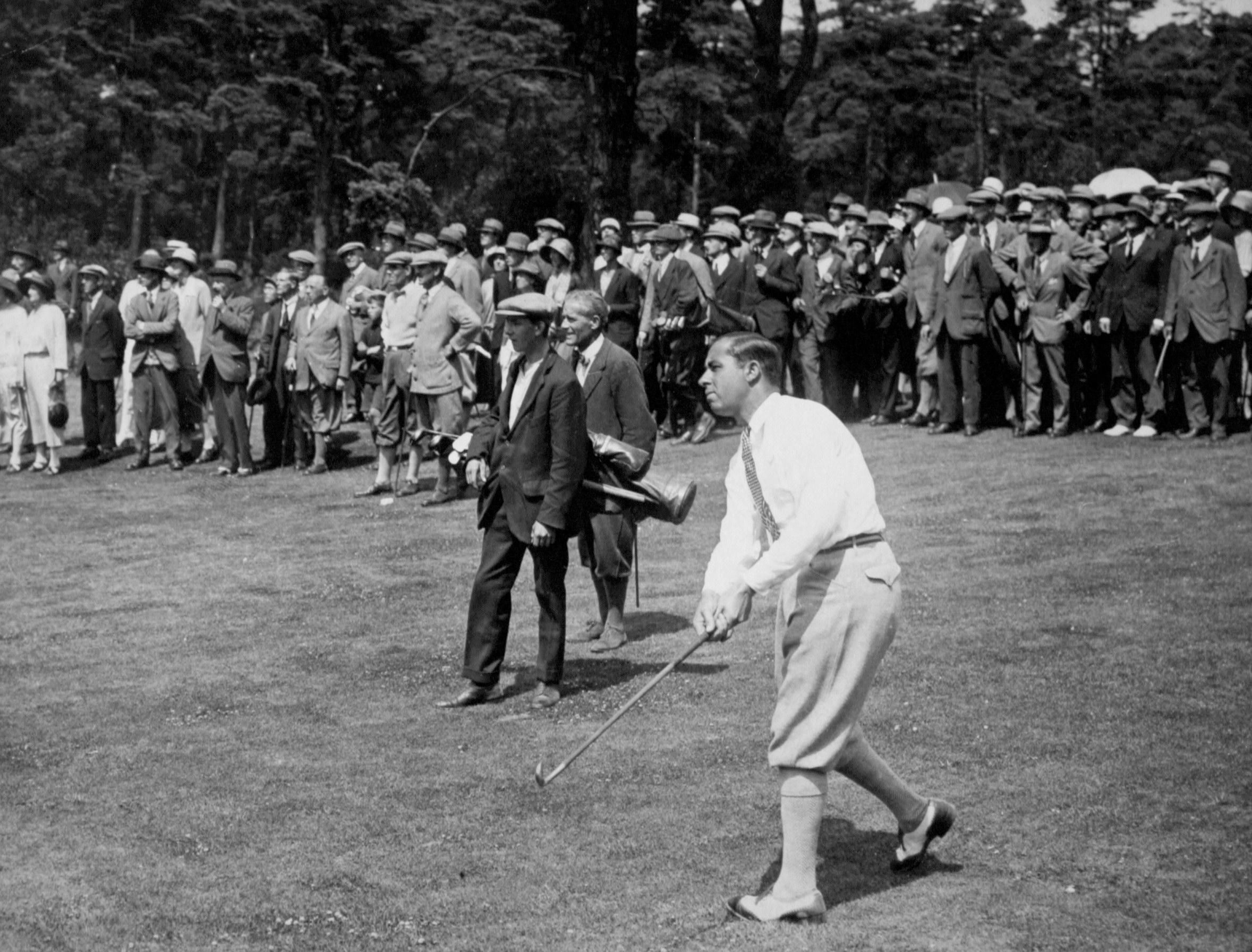
Walter Hagen. (Getty Images)
Newspapers rushed to cover these sportsmen, sending photographers to capture golf action for the next day’s edition and — always — to bring back to the newsroom a photo of the winner’s ceremony. Tournament champions valued these photos, to see themselves in the news and as a way to memorialize their achievement in an Associated Press wire photo, sent nationwide, showing a tournament trophy in hand, such as the Wanamaker.
Designed by Dieges & Clust in New York City, the Rodman Wanamaker Trophy was intended to be unique by its namesake’s standards. The company would add further luster to its product line by creating the Heisman Trophy in 1934.
The Wanamaker silverpiece features a finial (knob) resembling a cluster of grapes tugging to a vine and leaves spread about the lid that may be the artist’s “fruit of victory.” Wanamaker had stipulated in January 1916 that the PGA Championship resembled the popular News of the World Tournament in the United Kingdom, a match-play event.
NEARING SUNSET ON SATURDAY, SEPTEMBER 25 1926…
Walter Hagen had just earned his third consecutive PGA Championship, the fourth in a six-year period. Salisbury Golf Course in East Meadow, Long Island, was the site, a stone’s throw from the hosting venue, the Garden City Hotel. It was a rewarding finish to a long week. It began with a 36-hole qualifying test, where he earned medalist honors, followed by five days of grueling 36-hole match play winning against the best professional golfers in America. In the now all too familiar award ceremony, Hagen posed for the cameras, big smile as ever, holding the trophy he had brought with him from his victory the year before.

Walter Hagen presented the Wanamaker Trophy, September 25, 1926. Left to right, Leo Diegel, runner-up, George Sargent, PGA President, J. J. Lannin, owner, Salisbury Country Club, Jack Hagen, Club Professional (no relation) and Walter Hagen.
The eventful week was only one part of an exhausting long month. His grueling schedule began with his Western Open win in Indianapolis, followed by a multi-state, two thousand mile trek which included over three full weeks of crowd pleasing golfing exhibitions. Incredibly, Hagen was top billing for a golf exhibition
the very next morning at Winged Foot. He was paired with Gene Sarazen against newly crowned US Amateur Champion George Von Elm and ranking Amateur Jesse Guilford. It was a charity event for a good cause, and Walter would not disappoint. A 36-hole affair, and being two-up after the morning round, Hagen and Sarazen relinquished their lead in the afternoon to finish all square. 1500 strong witnessed a crowd pleasing tie, with applause all around.
the very next morning at Winged Foot. He was paired with Gene Sarazen against newly crowned US Amateur Champion George Von Elm and ranking Amateur Jesse Guilford. It was a charity event for a good cause, and Walter would not disappoint. A 36-hole affair, and being two-up after the morning round, Hagen and Sarazen relinquished their lead in the afternoon to finish all square. 1500 strong witnessed a crowd pleasing tie, with applause all around.
With the Wanamaker Trophy in tow, Walter now had a rare three day window without a planned exhibition or golf tournament. As an Honorary Member of The Biltmore-Westchester Country Club, and being a famous and frequent guest at the New York City Biltmore Hotel, he enjoyed his short window of free time in true Walter Hagen style.
NEARING SUNSET ON SATURDAY, NOVEMBER 5 1927…
The 1927 PGA Championship, hosted by Cedar Crest Country Club in Dallas, was a repeat performance for Hagen. He again led the entire field as Medalist Qualifier, then winning five straight matches to earn his fifth overall title, and fourth in a row. Remarkable in every way, yet something seemed to be missing. The press widely reported the victory celebration and awards presentation conducted by Texas oilman and Dallas Chamber of Commerce President, E. R. Brown. In the Associated Press report, they described “a large loving cup, one of the many side prizes he will receive”. Missing in the nationwide reports, was
the ceremonial press wire photo of the beaming champion plastered on the front pages of sports sections. Unusual for the time, no pictures appeared with Hagen and the Wanamaker Trophy.
the ceremonial press wire photo of the beaming champion plastered on the front pages of sports sections. Unusual for the time, no pictures appeared with Hagen and the Wanamaker Trophy.
OCTOBER 1 1928: BALTIMORE COUNTRY CLUB AT FIVE FARMS, LUTHERVILLE, MARYLAND
When Walter Hagen arrived at the 1928 PGA Championship, tournament officials asked about the trophy, and with typical bravado, Hagen remarked something to the effect of:
“I will win it anyway, so I didn’t bring it.”
Even if they were put off, officials had to admit he was probably right. After all, that was Walter, ever the showman. Unbeknownst to all, Hagen had been harboring a terrible secret, he lost the Wanamaker Trophy. While Hagen comfortably qualified into the 32 member field for match play, he finished eight strokes higher than Medalist, Al Espinosa. As another PGA Championship progressed, he arrived each morning to play with the hunger of a lion eyeing its prey.
By Oct. 4, eight players remained in contention, and Hagen was matched with Leo Diegel in the quarterfinals. They had met often before, and the matches were among the toughest of Hagen’s career. In 1925, Hagen was down two holes with two to play and came back to tie after 36 holes, then needed 40 holes to close out Diegel.
In 1926, Hagen defeated Diegel in the finals 4 & 3. But now, Hagen was riding a five-year, 22-match winning streak, the last seven of them burdened with the knowledge of the missing Wanamaker.
Hagen and Diegel’s duel reached the 35th hole. Diegel faced a 12-foot birdie putt, and Hagen was 10 feet away.
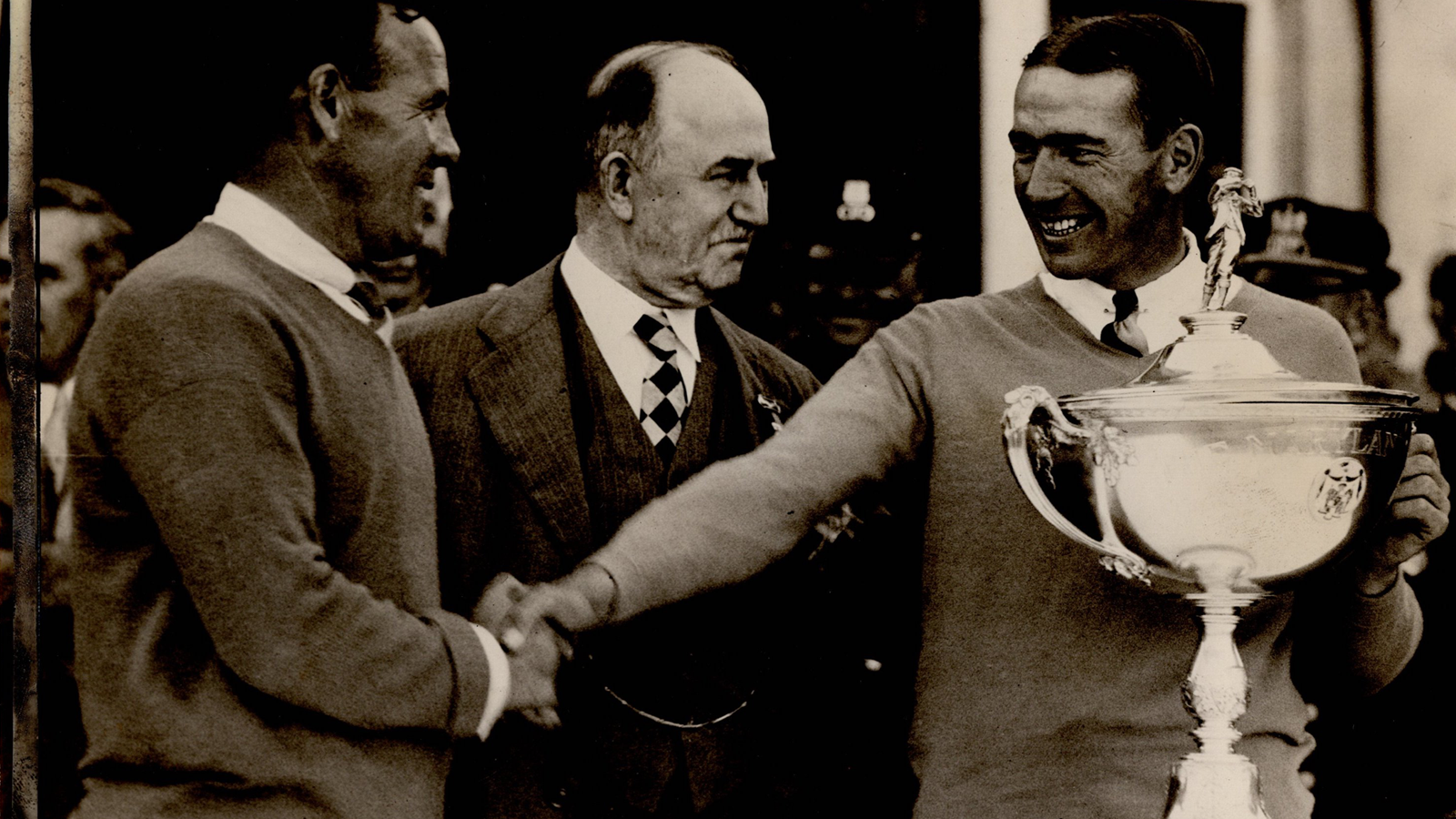
Left to right: Al Espinosa (runner-up), Broening (Baltimore Mayor) and Leo Diegel (1928 PGA Champion) holding the stand-in Maryland Cup Trophy.
Diegel took aim, struck his ball true, and the ball found the bottom of the cup. Walter had one more chance to prolong the match and to keep his Wanamaker secret. His putt ran just wide, and loud cheers echoed over the nearby fairways. Hagen shook his head and came forward like a true sportsman to give his conqueror a hearty handshake.
As they walked back to the clubhouse, Hagen began to accept the reality he was going to have to break the news to the PGA.
In the semifinals, Diegel trounced Gene Sarazen 9 & 8, then handled Al Espinosa 6 & 5 in the finals. He was a PGA Champion at last.
Hagen’s day of reckoning was upon him, and he stepped forward to admit he had lost the Wanamaker, mumbling something about a taxi ride gone wrong. This did not sit well with William Broening, the mayor of Baltimore, who was scheduled to conduct the awards ceremony at 4 p.m., and was not to be denied a proper picture with the golf champion.
As luck would have it, the large and distinctive Maryland Cup Trophy was just steps away, prominently displayed in the Baltimore Country Club lobby. It certainly would do the trick as a stand-in trophy for Mayor Broening. With forced smiles all around, a mayor’s handshake, and the winner’s check to Diegel, the ceremony was awkward, but then over.
Diegel’s frustration at not having a trophy at the ceremony, which he vented to reporters, was only matched by what PGA officials were experiencing with the missing silverpiece.
Realizing its next step, the PGA engaged R. Wallace and Sons, Wallingford, Connecticut, to produce a new trophy, one that would take the place of the lost Wanamaker. There were two requirements: complete the trophy in time for the 1929 PGA Championship and engrave Leo Diegel’s name on it.
DEC. 7, 1929: Hillcrest Country Club, Los Angeles, California
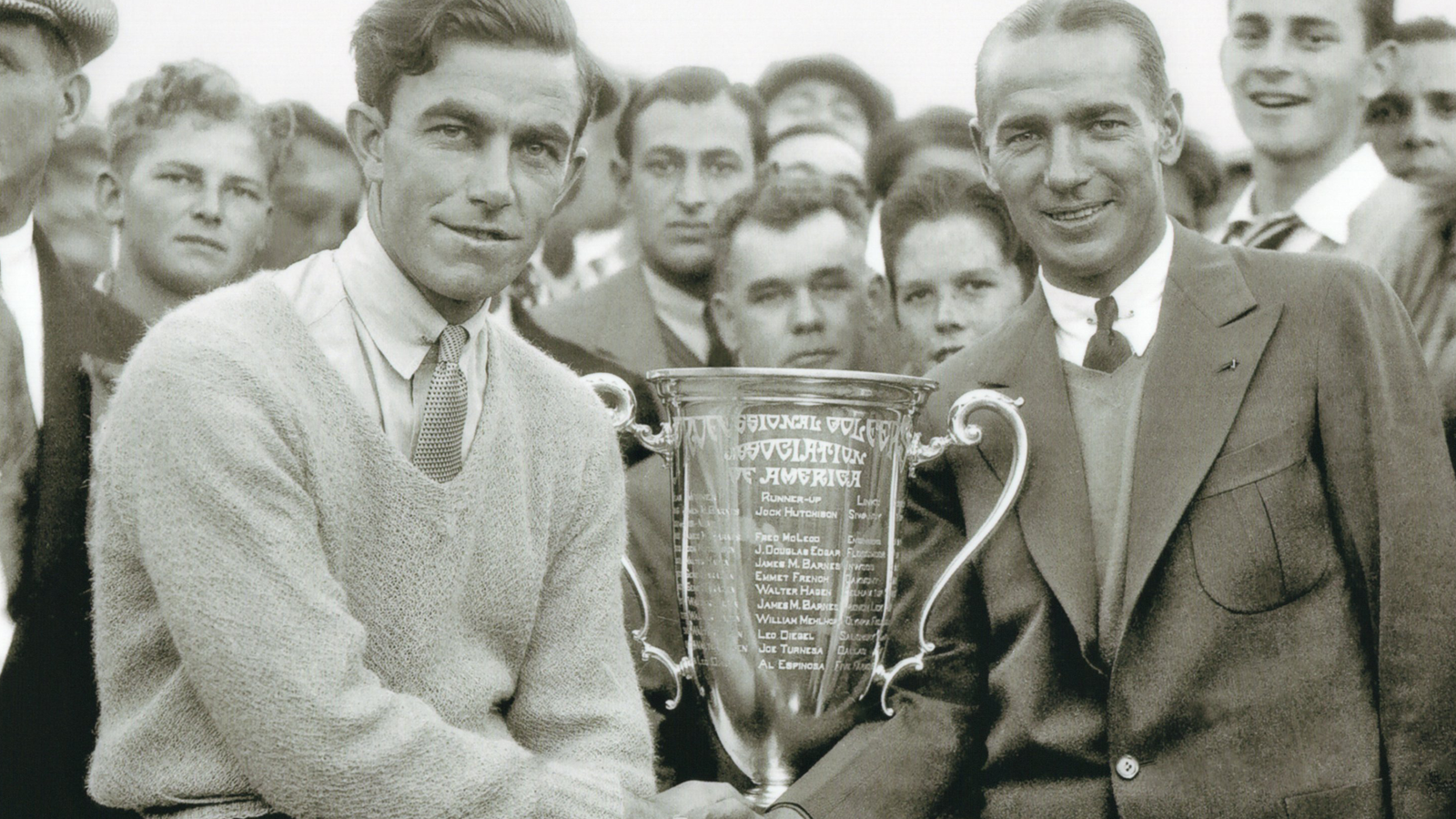
Johnny Farrell and 1929 PGA Champion Leo Diegel posing for the first time with the new PGA Championship trophy.
Leo Diegel arrived ready to defend his title as America’s top professional golfer, and did not have the privilege to display the championship trophy he earned a year earlier. His path to the championship again went through Walter Hagen and Gene Sarazen.
Both matches ended 3 & 2 in Diegel’s favor, leaving 1928 U.S. Open Champion Johnny Farrell as his foe in the finals. Up by one hole on the 27th green, Diegel’s second putt slipped just past the cup and partially stymied Farrell. To make this putt and win the hole, Farrell’s aggressive roll went slightly off line and struck Diegel’s ball, knocking that ball into the cup, and winning the hole for Diegel.
In those days, a stymie was not a rare occurrence, but hitting an opponent’s ball into the cup was very rare. But not so rare that it happened again on the very next hole when Farrell bumped Diegel’s ball into the hole for a 3-up margin.
Farrell was on his heels and Diegel cruised in for the win. Diegel quipped, “I’m just a very lucky boy. Johnny putted for me a couple of times, and I guess that won the match.”
For the first time since 1925, a ceremonial photo took place, not with the Wanamaker, but with the shiny new PGA trophy R. Wallace and Sons had crafted. At last, Diegel could flash a winning smile and wrap his arms around a PGA Champion’s trophy.
SEPT. 8, 1930: Fresh Meadow Country Club, Flushing, Queens, New York
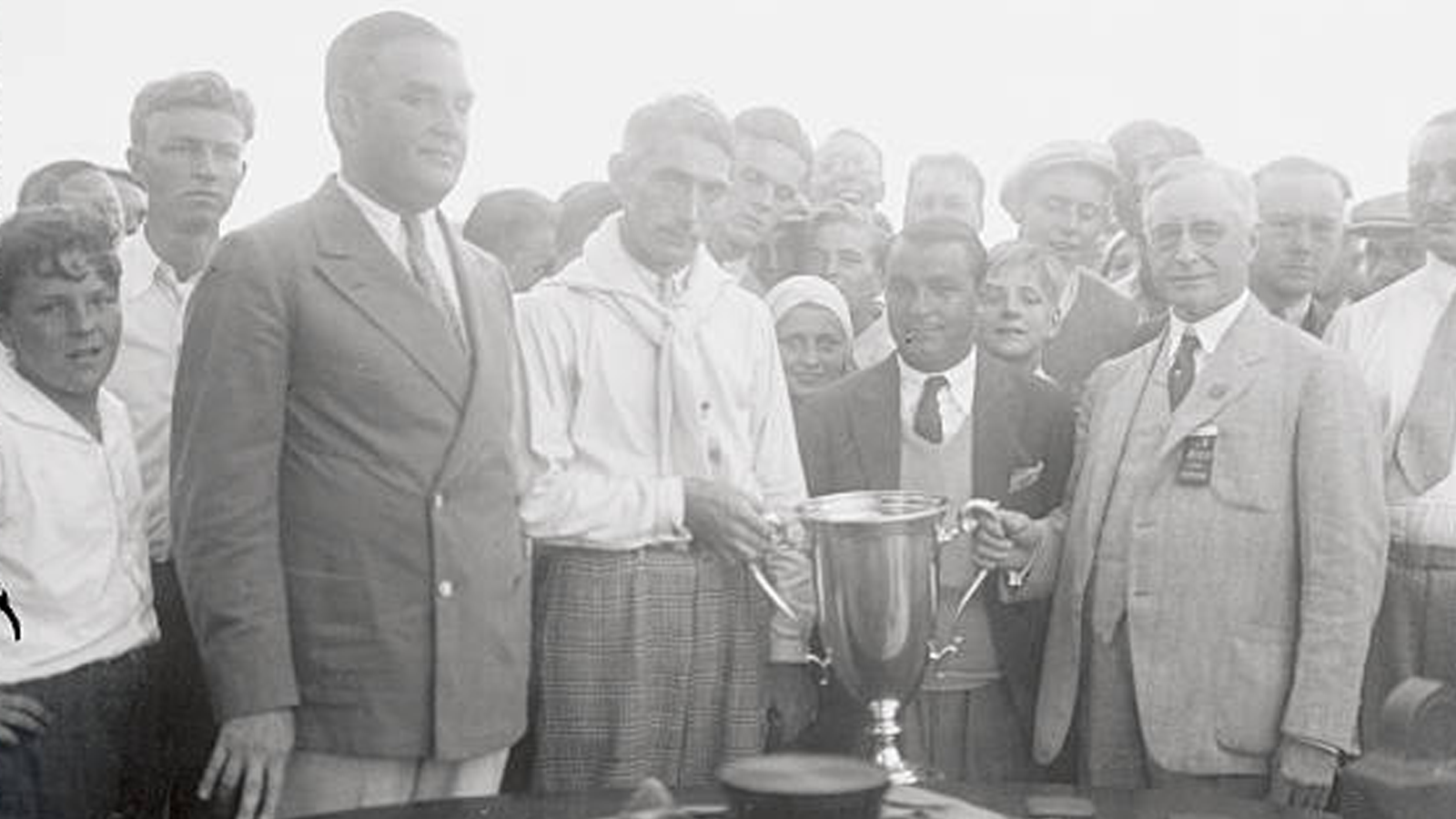
Left to right: 1930 Champion Tommy Armour, runner-up Gene Sarazen and PGA Business Manager A.W. Gates with the PGA Championship trophy.
Leo Diegel cared for the PGA trophy like a firstborn child. For the first time in several years, a PGA Champion would savor the traditional and very special moment of being greeted upon his arrival to defend his title, to lift the trophy from his car, and to hand it to the tournament committee for safekeeping until being awarded again later in the week.
Diegel breezed through his first-round match, but lost a hard fought 39-hole duel in the second round to Harold Sampson, a 118-pound former Claremont Country Club caddie.
Legends Gene Sarazen and Tommy Armour prevailed in the upper and lower brackets, winning four straight matches. With Diegel named the official referee, 4,000 spectators watched the final match deadlocked after 35 holes. On the 18th green, both balls appeared equidistant from the hole, calling for a measurement by Diegel. Armour lay just over 14 feet away, Sarazen just under 14 feet, Armour would putt first, with Diegel tending the flag.
As Armour was about to strike his putt, a camera clicked. He stopped, lined the putt up again, and then sent his ball directly towards the cup. In the last revolution, it dropped. Sarazen’s putt missed by one inch to the side of the cup, and Armour was the 1930 Champion. Armour would be the last European-born PGA Champion until Ireland’s Padraig Harrington in 2004.
In the award ceremony that included Sarazen, Fresh Meadow President Benjamin Ribman, PGA Business Manager A. W. Gates, the PGA proudly awarded its Perpetual Championship Trophy to Armour.
One month later, in typical Hagen style, everything got flipped upside down, or right side up, depending on your point of view.
OCT. 6, 1930: NEW YORK EVENING JOURNAL: "HAGEN FINDS LOST P.G.A. TROPHY."
“In Detroit last week. Hagen, while going through some old trunks, unearthed a bulky package. Lo, and behold! It was the P.G.A. trophy which had been lost and was found again! Now the problem is what can Hagen do with the mug?"
While the New York Evening Journal speculated, "what can Hagen do with the mug?” PGA President Alex Pirie didn't see the humor in it. The Wanamaker Trophy was quietly shipped to the Chicago office he shared with A. W. Gates.
At the 1931 PGA Championship hosted at Wannamoisett Country Club, Rhode Island, the Wanamaker re-appeared in its rightful place for the first time in half a decade. In a formal championship ceremony, Champion Tom Creavy grabbed the Wanamaker Trophy with gusto.
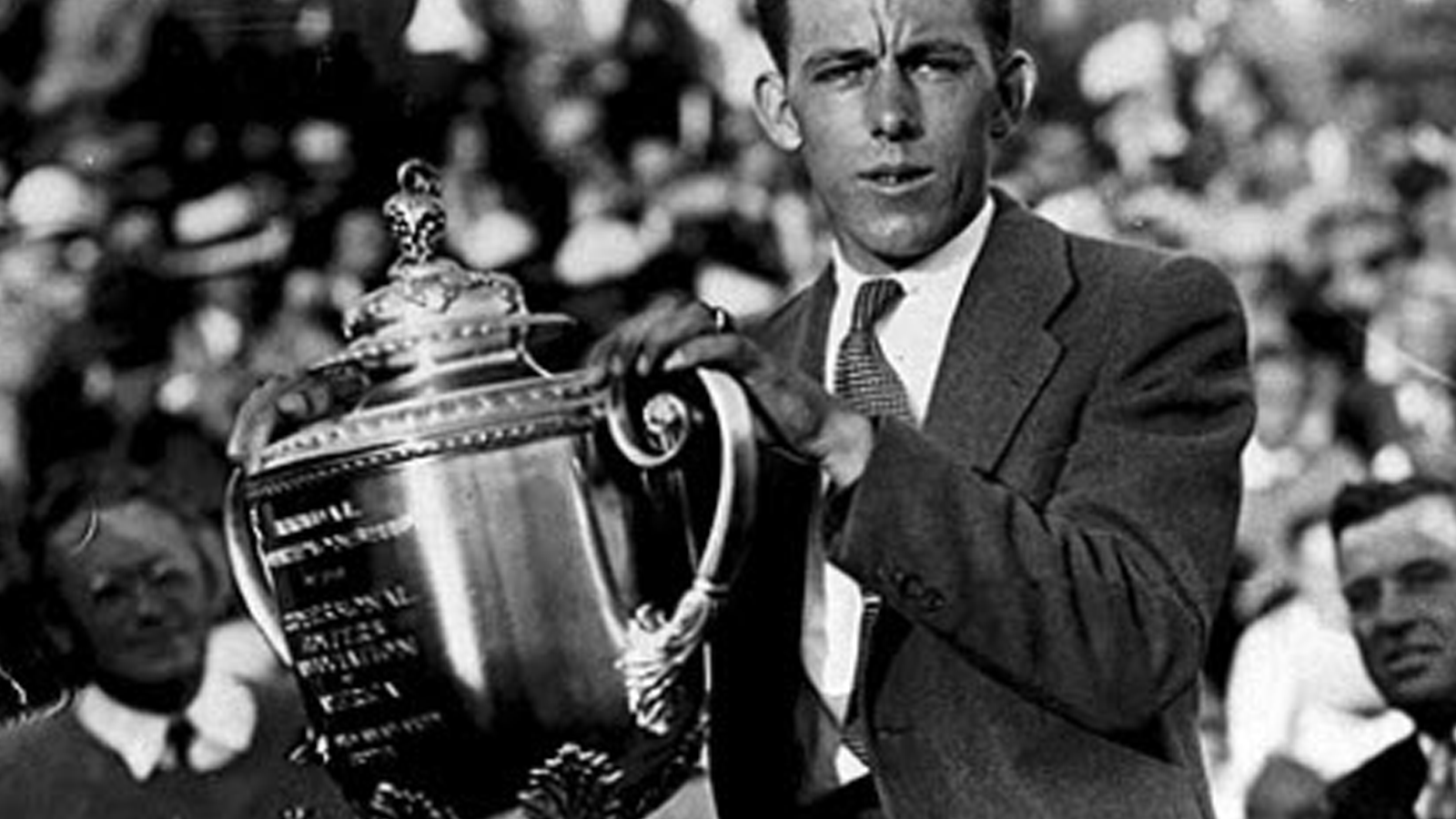
1931 PGA Champion Tom Creavy holding the Rodman Wanamaker trophy in a winner’s ceremony for the first time since 1925.
WHAT TO DO WITH THE NEW PGA CHAMPIONSHIP CUP PRESENTED TO DIEGEL AND ARMOUR?
Coincidentally, the PGA of America was already planning a memorial medal in honor of professional golf pioneer Alex Smith, who passed away in April 1930. Now with the richness of two trophies, the current PGA Cup would not simply be retired. It would be re-engraved in honor of Alex Smith.
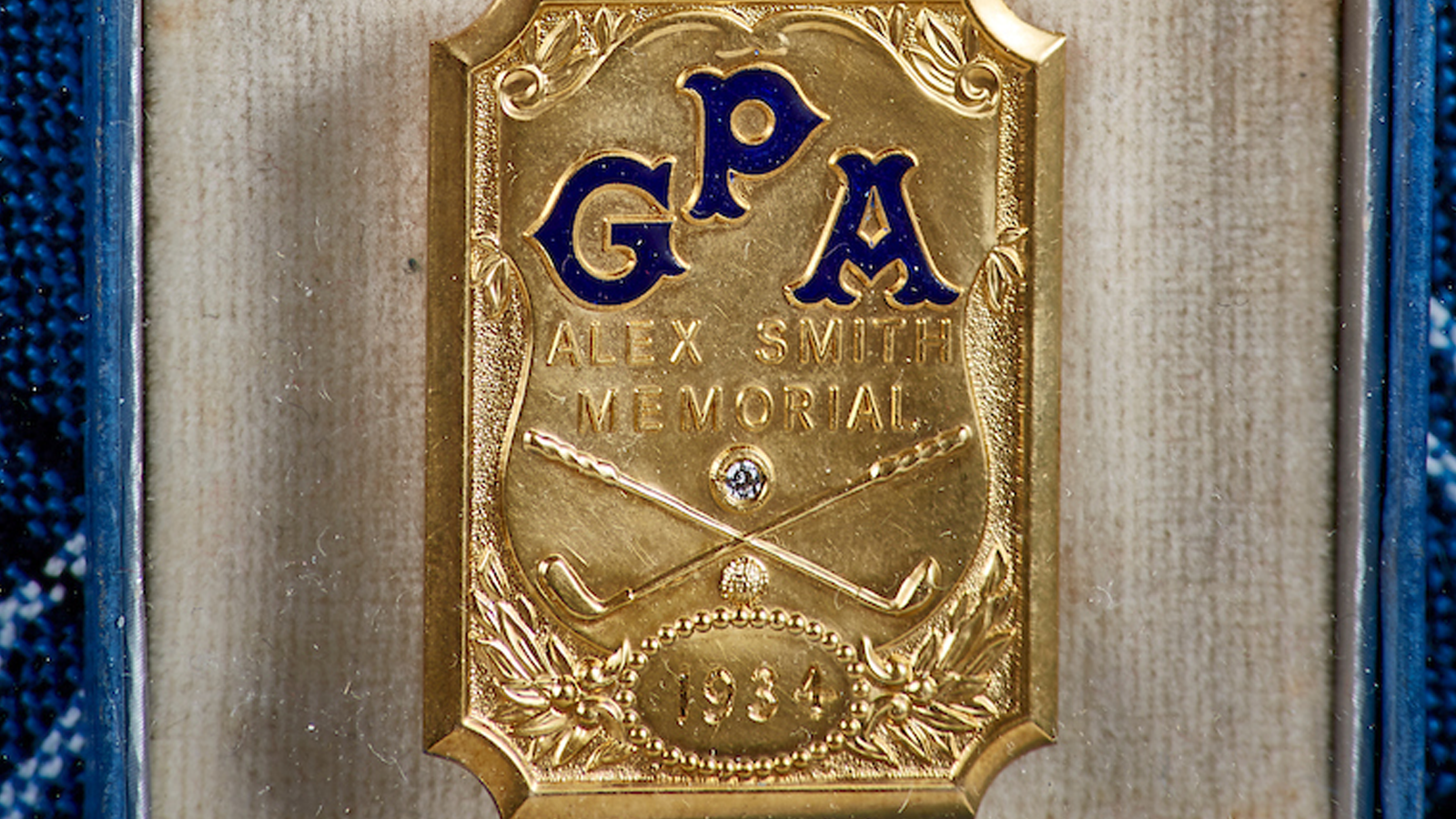
1934 Alex Smith Memorial Medal. One of eight created and gifted to the PGA and pre-dated 1931-1938.
Smith’s Scottish heritage was at the core of the Association’s roots. In fact, 28 of the 35 PGA Charter Members — those who attended a Jan. 17, 1916 organizing luncheon at Wanamaker’s Store in New York City — were born outside the United States.
A two-time U.S. Open Champion, Smith was not among the Charter Members, but he had already established himself on both sides of the Atlantic by his golf prowess, and was beloved more for his wit, charm, teaching ability, and no-nonsense approach to all things in life. He was famous for telling nervous golfers standing too long over a putt, “If you’re going to miss ‘em, miss ‘em quick.”
For the PGA, honoring Smith renewed memories of a contested issue from earlier days. While one of the PGA’s original 78 members elected in April 1916, he had publicly advocated his preference for stroke over match play. Smith believed the truest opponent for any professional golfer is the golf course itself, and whoever conquered her was the champion. Match play was entertaining and enjoyable for spectators, and more well suited for the skill of amateurs or for exhibitions.
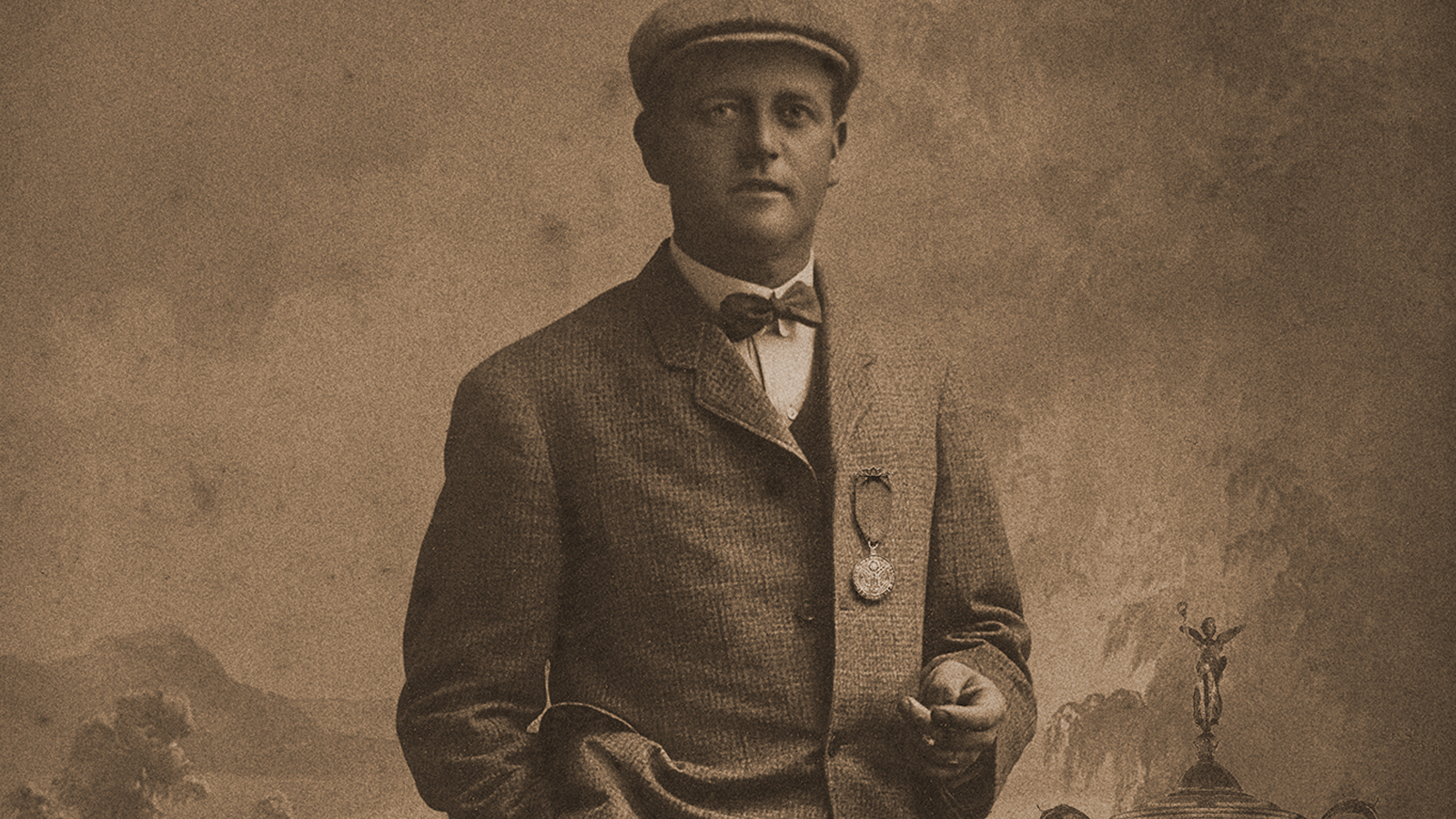
Alex Smith.
Smith’s fans were many and powerful, including John McEntee Bowman, founder of Biltmore Hotels, and Henry Topping, industrialist and future family owner of the New York Yankees. PGA of America President Alex Pirie and Metropolitan PGA President John Inglis led the charge to create the Alex Smith Memorial Medals. Inglis was mentored by Smith from a young age, and honoring Alex was deeply personal to him.
The first eight gold medals were created and presented. The PGA agreed; the memorial medals were approved, and then added the trophy with the lower portion re-engraved from PGA Champions to Medalists.
With the drama of lost and found trophies settled, Gene Sarazen carried the day in qualifying as medalist and became the first winner of the Alex Smith Memorial medal — and thanks to Walter — the man who weathered perhaps the biggest mulligan in major championship history off the course — his name on a transformed trophy as well.
Five days later, 20-year-old newcomer Tom Creavy won the PGA Championship, the $1,000 purse, the gold medal, and for the first time in years, possession of the Rodman Wanamaker Trophy.
The next year, Olin Dutra earned medalist honors and won the PGA Championship. He became the first golfer to possess both the Wanamaker and Alex Smith trophies in the same year.
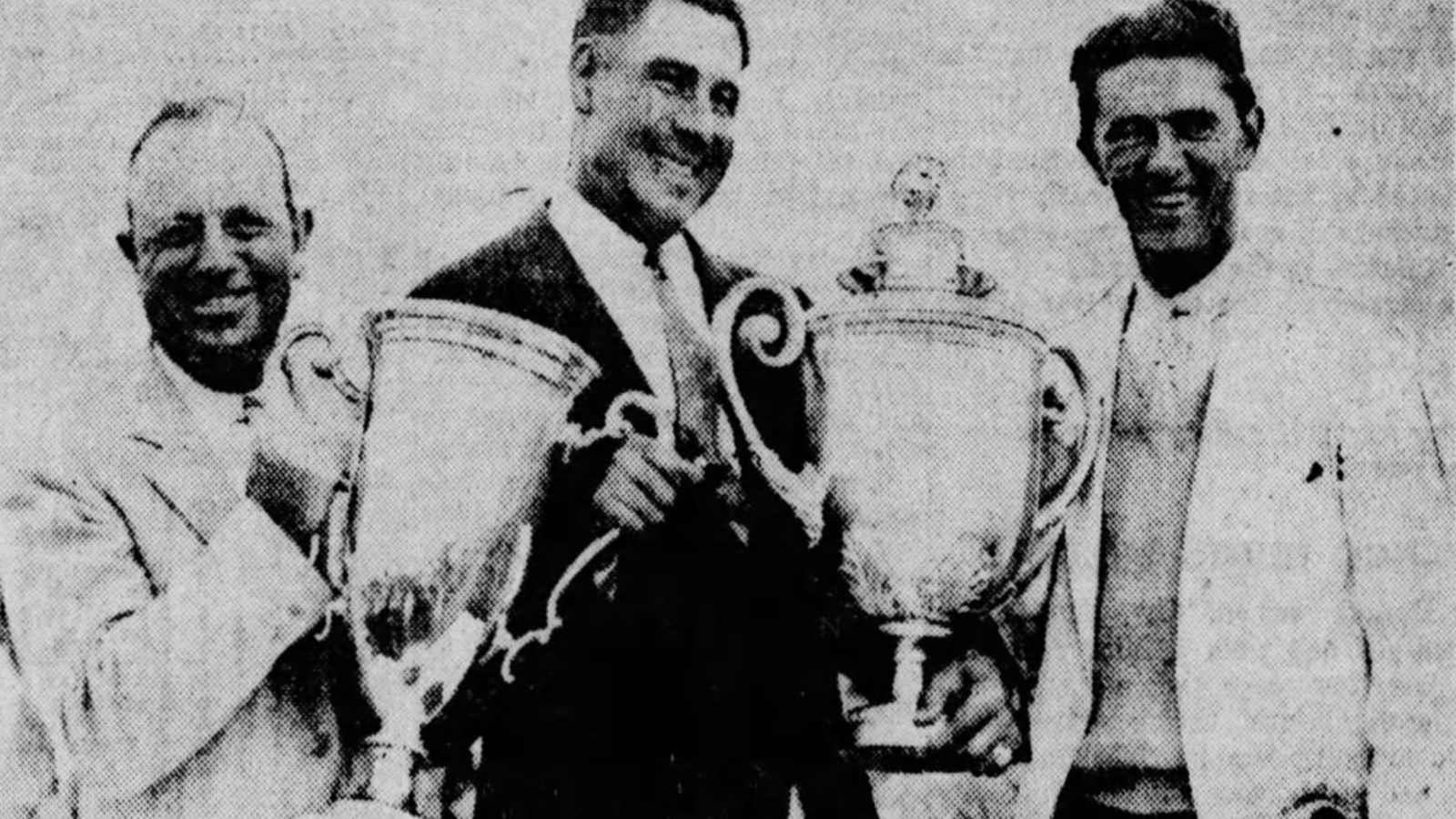
Left to right: PGA President Charley Hall, 1932 PGA Medalist and Champion Olin Dutra and runner-up Frank Walsh. Dutra was the first to hold the Wanamaker and Alex Smith trophies in the same ceremony.
In 1935, Walter Hagen was medalist, earned possession of the Alex Smith Memorial Trophy, and tongue in cheek, the PGA collectively held its breath. He properly returned it the next year without incident.
Over the next 25 years, the Alex Smith trophy was engraved with a “Who’s Who” of professional golf, including Sarazen, Hagen, both Olin and Mortie Dutra, Ben Hogan, Byron Nelson three times, twice each for Sam Snead and Dutch Harrison, Harry Cooper, Jim Ferrier, Doug Ford, Johnny Revolta, Jimmy Demaret, Ed Oliver, Claude Harmon and Lloyd Mangrum.
In 1956, the 40-year tradition of a grueling championship week, combining a Monday/Tuesday qualifying on the very same course as the Wednesday-Saturday match play finals, was replaced by advanced regional qualifying. With that, the Alex Smith Memorial Trophy was retired.
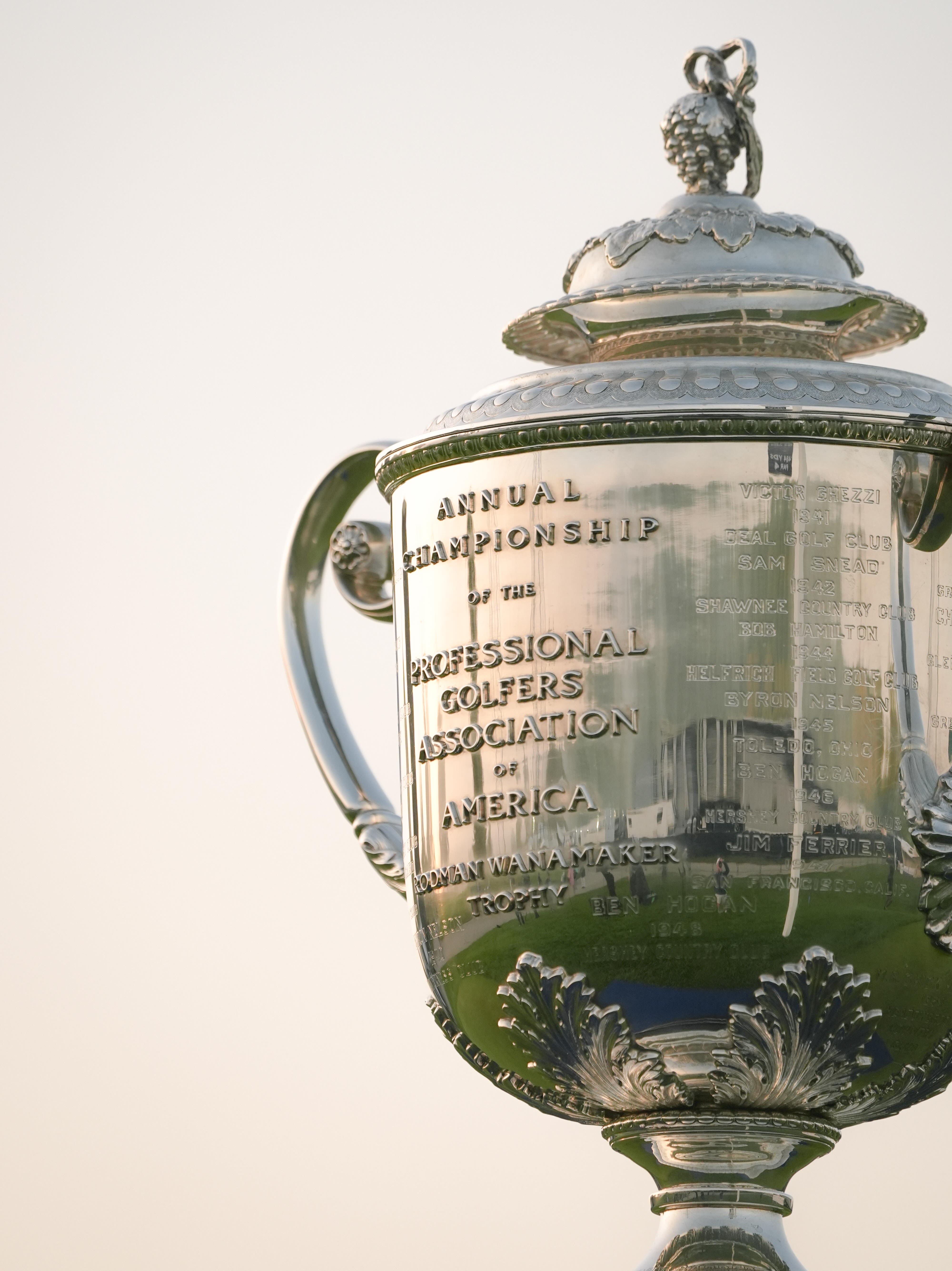
In 1958, with the advent of television to expand worldwide coverage, Llanerch Country Club outside Philadelphia became the first PGA Championship conducted at stroke play — a tradition continued to this day.
David Mackesey is the Club Historian for Carnoustie Golf Club in Scotland, Diablo Country Club in the San Francisco Bay Area and The Club at Lac La Belle in Wisconsin. He is Co-Founder, along with Bill Thompson of the Smith Society. PGA Historian Emeritus Bob Denney contributed to this story.
